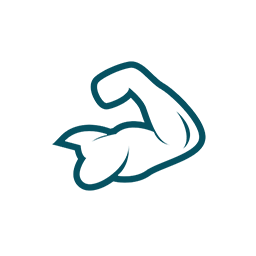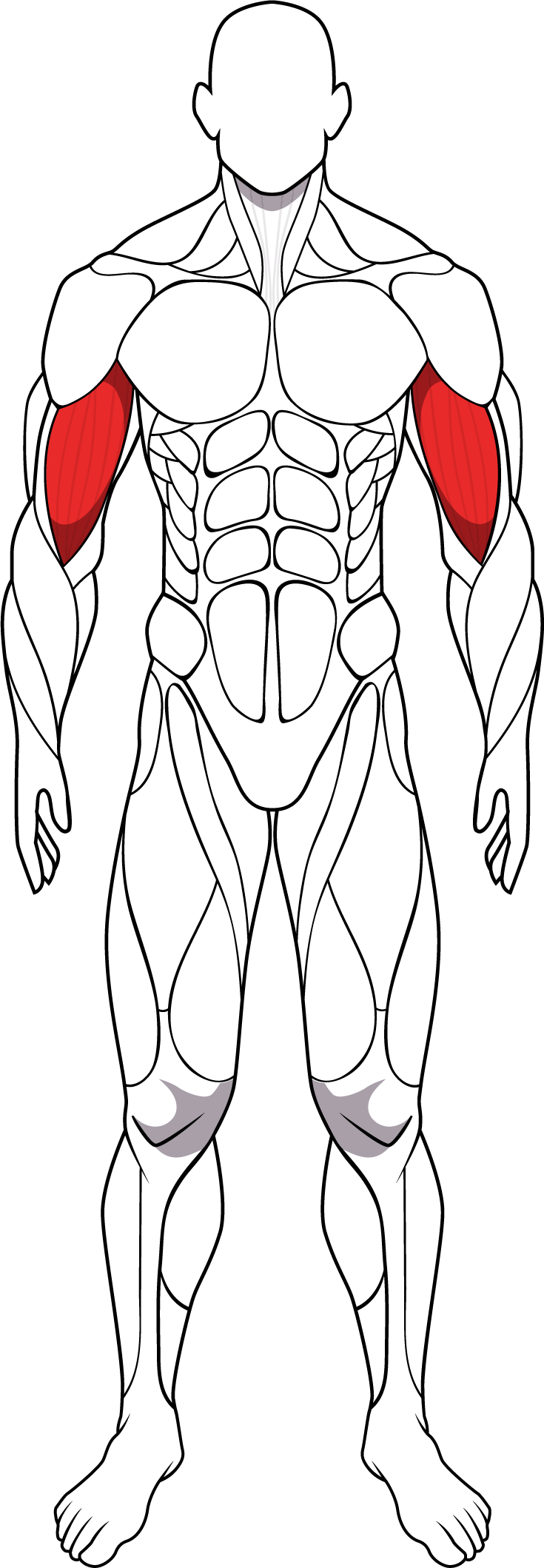The biceps brachii, commonly referred to as the biceps, is a two-headed muscle located on the front of the upper arm. It plays a crucial role in flexing the elbow joint and supinating the forearm (rotating the palm upward). The biceps muscle is one of the most prominent muscles in the upper body and is often associated with strength and aesthetics.
The biceps brachii, commonly referred to as the biceps, is a two-headed muscle located on the front of the upper arm. It plays a crucial role in flexing the elbow joint and supinating the forearm (rotating the palm upward). The biceps muscle is one of the most prominent muscles in the upper body and is often associated with strength and aesthetics.
Anatomically, the biceps brachii muscle consists of two heads:
Long Head: The long head of the biceps originates from the supraglenoid tubercle of the scapula (shoulder blade) within the shoulder joint capsule. It runs along the front of the upper arm and descends between the medial and lateral heads of the triceps muscle.
Short Head: The short head of the biceps originates from the coracoid process of the scapula, which is located on the front of the shoulder blade near the shoulder joint.
Both heads of the biceps muscle merge into a single tendon, known as the biceps tendon, which inserts into the radial tuberosity of the radius (one of the forearm bones). This insertion point allows the biceps muscle to exert force on the forearm, facilitating movements such as elbow flexion and forearm supination.
Functions of the biceps brachii muscle include:
Elbow Flexion: The primary function of the biceps muscle is to flex the elbow joint, bringing the forearm closer to the upper arm. This movement is commonly known as "curling" and is involved in actions such as lifting objects and performing biceps exercises.
Forearm Supination: In addition to elbow flexion, the biceps brachii also assists in supinating the forearm, which involves rotating the palm upward. This action is important for activities such as turning a doorknob, using a screwdriver, or performing certain sports movements.
Shoulder Flexion: While not its primary function, the long head of the biceps also contributes to shoulder flexion, particularly when the arm is raised overhead. It assists in raising the arm forward and upward.
Strengthening the biceps muscles is a common goal for many individuals seeking to improve upper body strength and aesthetics. Some common exercises that target the biceps include:
Biceps Curls: Biceps curls are performed using dumbbells, barbells, or resistance bands. They involve flexing the elbow joint to lift the weight toward the shoulder, focusing on contracting the biceps muscle.
Hammer Curls: Hammer curls are similar to traditional biceps curls but involve holding the weights with a neutral grip (palms facing inward). This variation targets both the biceps and the brachialis muscle, which lies beneath the biceps.
Preacher Curls: Preacher curls are performed using a preacher bench, which provides support for the arms while performing biceps curls. This exercise isolates the biceps and minimizes involvement of other muscles.
Chin-Ups and Pull-Ups: Chin-ups and pull-ups are bodyweight exercises that primarily target the back muscles, but they also engage the biceps as secondary movers. The underhand grip used in chin-ups places greater emphasis on the biceps compared to the overhand grip used in pull-ups.
Concentration Curls: Concentration curls are performed sitting on a bench with the elbow braced against the inner thigh. This exercise isolates the biceps by eliminating momentum and focusing on controlled movement.
Incorporating a variety of these exercises into your workout routine can help develop strong, well-defined biceps muscles, improve upper body strength and aesthetics, and enhance overall athletic performance. As with any exercise program, it's essential to perform movements with proper form and technique to maximize effectiveness and minimize the risk of injury. If you're new to strength training or have any concerns, consider working with a qualified fitness professional to develop a safe and effective workout plan tailored to your goals and fitness level.
Anatomically, the biceps brachii muscle consists of two heads:
Long Head: The long head of the biceps originates from the supraglenoid tubercle of the scapula (shoulder blade) within the shoulder joint capsule. It runs along the front of the upper arm and descends between the medial and lateral heads of the triceps muscle.
Short Head: The short head of the biceps originates from the coracoid process of the scapula, which is located on the front of the shoulder blade near the shoulder joint.
Both heads of the biceps muscle merge into a single tendon, known as the biceps tendon, which inserts into the radial tuberosity of the radius (one of the forearm bones). This insertion point allows the biceps muscle to exert force on the forearm, facilitating movements such as elbow flexion and forearm supination.
Functions of the biceps brachii muscle include:
Elbow Flexion: The primary function of the biceps muscle is to flex the elbow joint, bringing the forearm closer to the upper arm. This movement is commonly known as "curling" and is involved in actions such as lifting objects and performing biceps exercises.
Forearm Supination: In addition to elbow flexion, the biceps brachii also assists in supinating the forearm, which involves rotating the palm upward. This action is important for activities such as turning a doorknob, using a screwdriver, or performing certain sports movements.
Shoulder Flexion: While not its primary function, the long head of the biceps also contributes to shoulder flexion, particularly when the arm is raised overhead. It assists in raising the arm forward and upward.
Strengthening the biceps muscles is a common goal for many individuals seeking to improve upper body strength and aesthetics. Some common exercises that target the biceps include:
Biceps Curls: Biceps curls are performed using dumbbells, barbells, or resistance bands. They involve flexing the elbow joint to lift the weight toward the shoulder, focusing on contracting the biceps muscle.
Hammer Curls: Hammer curls are similar to traditional biceps curls but involve holding the weights with a neutral grip (palms facing inward). This variation targets both the biceps and the brachialis muscle, which lies beneath the biceps.
Preacher Curls: Preacher curls are performed using a preacher bench, which provides support for the arms while performing biceps curls. This exercise isolates the biceps and minimizes involvement of other muscles.
Chin-Ups and Pull-Ups: Chin-ups and pull-ups are bodyweight exercises that primarily target the back muscles, but they also engage the biceps as secondary movers. The underhand grip used in chin-ups places greater emphasis on the biceps compared to the overhand grip used in pull-ups.
Concentration Curls: Concentration curls are performed sitting on a bench with the elbow braced against the inner thigh. This exercise isolates the biceps by eliminating momentum and focusing on controlled movement.
Incorporating a variety of these exercises into your workout routine can help develop strong, well-defined biceps muscles, improve upper body strength and aesthetics, and enhance overall athletic performance. As with any exercise program, it's essential to perform movements with proper form and technique to maximize effectiveness and minimize the risk of injury. If you're new to strength training or have any concerns, consider working with a qualified fitness professional to develop a safe and effective workout plan tailored to your goals and fitness level.


